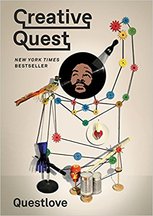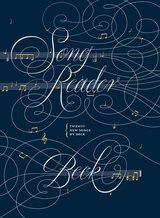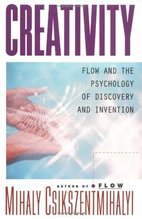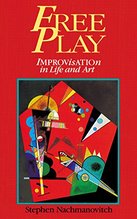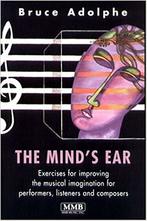Abramo, J. & Reynolds, A. (2015). Pedagogical creativity as a framework for music teacher education. Journal of Music Teacher Education, 25(1), 37-51.
Balkin, A. (1990). What is creativity, what is it not? Music Educators Journal, 79(9), 29-32.
Bolden, B. (2013). Learner created podcasts. Music Educators Journal,100(1), 75-80.
Campbell P. (1990). Cross-cultural perspectives of musical creativity. Music Educators Journal, 79(9), 43-46.
Davidson, L. (1990). Tools & environments for musical creativity. Music Educators Journal, 79(9), 47-51
Fuller, B. (1966). The music of the new life: Thoughts on creativity sensorial reality and comprehensiveness. Music Educators Journal, 52-68.
Gilbert, D. (2016). Curious collaborative creativity. Music Educators Journal, 99,27-34.
Gruenhagen, L. (2017). Developing musical creativity through reflective and collaborative practices. Music Educators Journal, 103(3), 40-45.
Guilford (1950). Creativity. The American Psychologist, 444-454.
Healy, D. (2014). “Play it again, Billy, but this time with more mistakes”: Divergent improvisation activities for the jazz ensemble. Music Educators Journal, 100, 67-72.
Hickey, M. (2001). Creativity in the music classroom. Music Educators Journal, 88(1),17-18.
Higgins, L. & Mantie, R. (2013). Improvisation as ability culture and experience. Music Educators Journal, 38-44.
Kratus, J. (1990). Structuring the music curriculum for creative learning. Music Educators Journal, 79(9). 33-37.
Kratus, J. (2017). Music listening is creative. Music Educators Journal, 103(3), 46-51.
Landau & Limb (2017). The neuroscience of improvisation. Music Educators Journal, 103(3), 27-33.
McDonald, R. & Miell, D. (2000). Creativity and music education: The impact of social variables. International Journal of Music Education, 36, 58-68.
Norgaard, M. (2017). Developing musical creativity through improvisation in the large performance classroom. Music Educators Journal, 103(3), 34-39.
Norris, C. (2010). Introducing creativity in the ensemble setting. Music Educators Journal, 96, 57-62.
Raviv, D. (2004). Hands on activities for innovative problem solving. Proceedings of the 2004 American Society for Engineering Education Annual Conference and Exposition.
Running, D. (2008). Creativity research in music education. Update: Applications of Research in Music Education, 27(1), 41-48.
Sovansky, E., et. Al. (2016). Not all musicians are creative.Psychology of Music, 44(1) 25–36.
Strand, K. (2017). Looking forward to a creative future. Music Educators Journal, 103(3),19-20.
Strand , K. & Brenner, B. (2017). Learning to be creatively expressive performers. Music Educators Journal, 103(3), 21-26.
Webster, P. (1990). Creative thinking in music. Music Educators Journal, 79(9), 21.
Webster, P. (1990). Creativity as creative thinking. Music Educators Journal, 79(9), 22-28.
Webster, P. (2016). Creative thinking in music twenty-five years on. Music Educators Journal, 102, 26-32.
Whitcomb, R. (2013). Teaching improvisation in elementary general music: Facing fears and fostering creativity. Music Educators Journal, 43-50.
Wood, C. (2015). 10 Hands-on exercises to spark student creativity and innovation. Venture Well.
Balkin, A. (1990). What is creativity, what is it not? Music Educators Journal, 79(9), 29-32.
Bolden, B. (2013). Learner created podcasts. Music Educators Journal,100(1), 75-80.
Campbell P. (1990). Cross-cultural perspectives of musical creativity. Music Educators Journal, 79(9), 43-46.
Davidson, L. (1990). Tools & environments for musical creativity. Music Educators Journal, 79(9), 47-51
Fuller, B. (1966). The music of the new life: Thoughts on creativity sensorial reality and comprehensiveness. Music Educators Journal, 52-68.
Gilbert, D. (2016). Curious collaborative creativity. Music Educators Journal, 99,27-34.
Gruenhagen, L. (2017). Developing musical creativity through reflective and collaborative practices. Music Educators Journal, 103(3), 40-45.
Guilford (1950). Creativity. The American Psychologist, 444-454.
Healy, D. (2014). “Play it again, Billy, but this time with more mistakes”: Divergent improvisation activities for the jazz ensemble. Music Educators Journal, 100, 67-72.
Hickey, M. (2001). Creativity in the music classroom. Music Educators Journal, 88(1),17-18.
Higgins, L. & Mantie, R. (2013). Improvisation as ability culture and experience. Music Educators Journal, 38-44.
Kratus, J. (1990). Structuring the music curriculum for creative learning. Music Educators Journal, 79(9). 33-37.
Kratus, J. (2017). Music listening is creative. Music Educators Journal, 103(3), 46-51.
Landau & Limb (2017). The neuroscience of improvisation. Music Educators Journal, 103(3), 27-33.
McDonald, R. & Miell, D. (2000). Creativity and music education: The impact of social variables. International Journal of Music Education, 36, 58-68.
Norgaard, M. (2017). Developing musical creativity through improvisation in the large performance classroom. Music Educators Journal, 103(3), 34-39.
Norris, C. (2010). Introducing creativity in the ensemble setting. Music Educators Journal, 96, 57-62.
Raviv, D. (2004). Hands on activities for innovative problem solving. Proceedings of the 2004 American Society for Engineering Education Annual Conference and Exposition.
Running, D. (2008). Creativity research in music education. Update: Applications of Research in Music Education, 27(1), 41-48.
Sovansky, E., et. Al. (2016). Not all musicians are creative.Psychology of Music, 44(1) 25–36.
Strand, K. (2017). Looking forward to a creative future. Music Educators Journal, 103(3),19-20.
Strand , K. & Brenner, B. (2017). Learning to be creatively expressive performers. Music Educators Journal, 103(3), 21-26.
Webster, P. (1990). Creative thinking in music. Music Educators Journal, 79(9), 21.
Webster, P. (1990). Creativity as creative thinking. Music Educators Journal, 79(9), 22-28.
Webster, P. (2016). Creative thinking in music twenty-five years on. Music Educators Journal, 102, 26-32.
Whitcomb, R. (2013). Teaching improvisation in elementary general music: Facing fears and fostering creativity. Music Educators Journal, 43-50.
Wood, C. (2015). 10 Hands-on exercises to spark student creativity and innovation. Venture Well.
